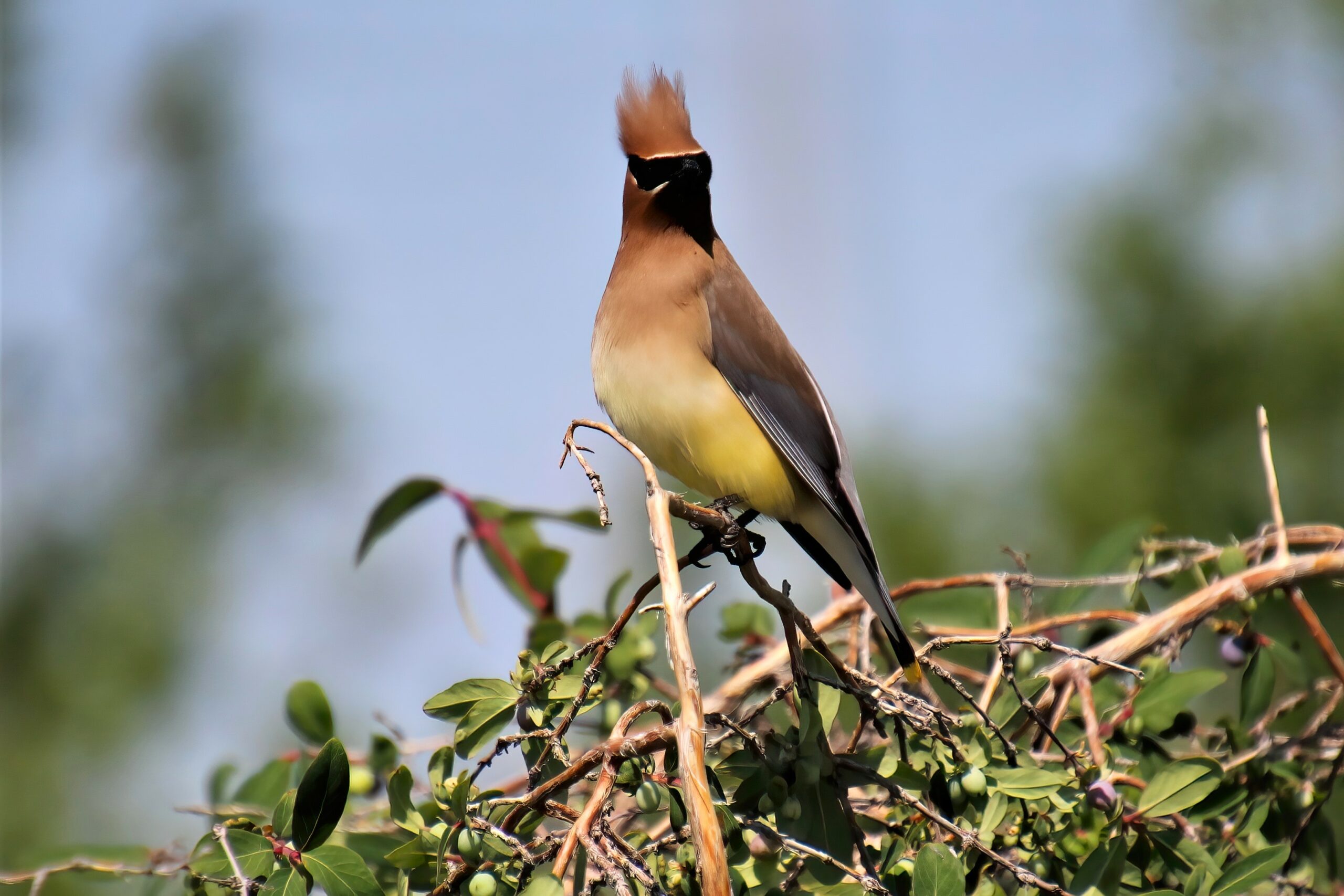Alberta landscapes and habitat provide great places for perhaps one of our most beautiful of birds, the Cedar Waxwing. Named after the notable red tips resulting from secretions, these waxy highlights increase in number and in size as the bird ages. Adaptable to many habitats, waxwings can be found in deciduous, coniferous or mixed woodlands, grasslands, and increasingly in suburban areas. It’s not unusual to have waxwing flocks searching for ornamental red berries found on mountain ash trees, as well as strawberries, raspberries and service berries. Juniper, hawthorn, crab apple and Russian olive fruits are enjoyable target delights as well. To supplement the frugivore diet, insects such as dragonflies, damselflies and stoneflies are often captured while in flight. When our mountain ash tree berries ripen, it’s a pleasure to watch waxwings pull one berry at a time and then swallow each one whole.
Averaging 6 inches (16cm) in length this waxwing is a sleek bird sporting a large head, wide beak and short neck. Capping its beauty is a crest which droops over the back of the head. Using broad wings with very pointed tips to fly, the waxwing ends its beauty with a short, square tipped tail. Color-wise, the Cedar Waxwing’s head and chest is a richly hued pale brown, fading into a soft gray. Dressed in a pale yellow belly, a gray tail which is nicely tipped in bright yellow adds to the nuanced narrow black mask that is neatly outlined in white.
If you are fortunate to see the unique mating ritual of Cedar Waxwings, you will know that true romance must be out there in the world. Initially both sexes alternately hop toward one another, touching beaks from time to time. The game of romance is stepped up when the male brings an insect, berry or flower petal to his potential partner. The female will then hop away with the gift, return it, receive it again and then finally consume the offering.
While birding, we like to “see with our ears” when searching for Alberta’s songbirds. Waxwings are no exception. In July and August with leaves concealing the waxwings, our ears are tuned in for the soft trill or buzz of the waxwing. No specific song is sung by waxwings. As the trill is unique, once heard it’s a matter of finding the source of this unique soundtrack,.
Once autumn arrives, many waxwings head south into the United States and Mexico. In southern Alberta, some Cedar Waxwings will over winter if the conditions are favorable. With the majority of these aerial beauties gone, waxwing fans fortunately, can turn to the Bohemian Waxwing species to continue the admiration of a most marvelous pair of Alberta birds.







